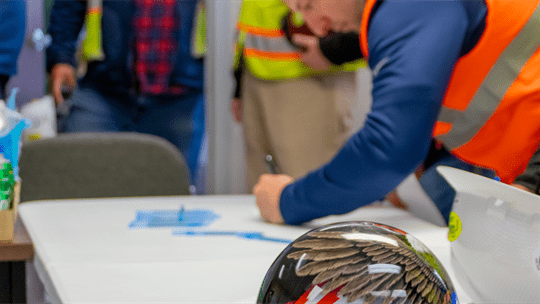Barton Malow Builders has signed on to a partnership with the Michigan Occupational Safety and Health Administration (MIOSHA) to help in its mission to help protect the health and safety of workers on the University of Michigan Pavilion healthcare project in Ann Arbor, Michigan. The partnership between MIOSHA, Barton Malow Builders, and subcontractors on site will include both scheduled and unscheduled site visits from MIOSHA to ensure transparency and compliance on the project.
MIOSHA Construction Safety Partnership
MIOSHA has conducted more than 50 safety partnerships since it initiated the practice in 2004. The safety partnerships have fostered innovative methods and serve as a key strategic tool to improve safety on project sites across the State of Michigan.
“One thing we’ve noticed is the jobsites continue to get safer,” said Lawrence Hidalgo, MIOSHA Division Director. “There was a time when partnership sites had half the injury and illness rate of the non-partnership side. That number is actually starting to come down and that’s because of all the partnerships, sharing, and lessons learned that we take to other jobs to improve conditions all over the state.”
As one of the foremost construction firms in Michigan, Barton Malow has assumed a leadership role as it relates to improving safety culture throughout the industry. It has been a part of multiple partnerships with MIOSHA over the years, and its latest agreement at the University of Michigan Pavilion will continue to move the needle.
Barton Malow’s safety record is significantly better than the industry average. Still, partnerships like this with MIOSHA help reinforce its commitment to continuous improvement and moves it closer to its overall goal to achieve zero lost time incidents, zero recordables, and zero first-aid incidents.




